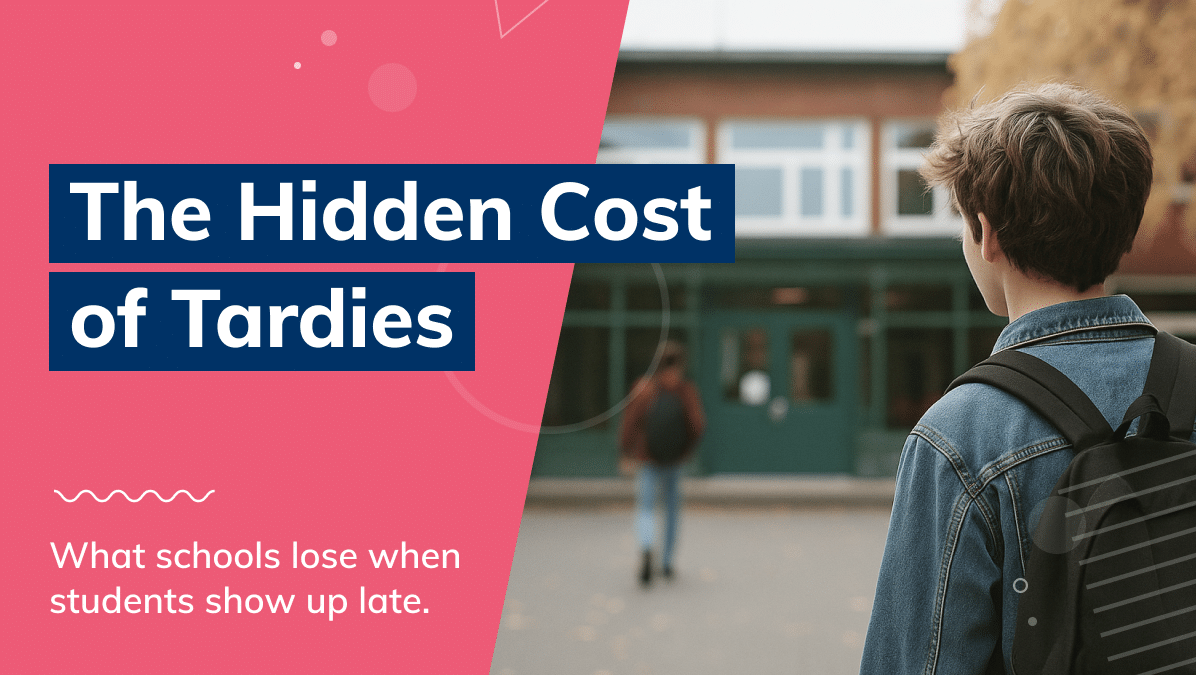The Frustration We All Know
The bell rings. A door opens mid-lesson. A student slips in, late again.
You already know what comes next — the pause, the distraction, the sigh.
The rhythm of the class breaks. Focus scatters. And while it lasts only a few moments, it’s another reminder of how something so small can ripple through the entire school day.
We’ve all tried to solve it. Clearer policies, stricter consequences, better communication with families. And yet, every semester, the problem returns. Because tardiness isn’t really about alarm clocks or time management — it’s about connection.
So maybe the question isn’t what tardiness costs us — but what it reveals.
The Invisible Handshake
Every school morning begins with a silent agreement:
You show up ready to learn. We’ll show up ready to teach.
It’s an invisible handshake — the shared understanding that keeps a school culture thriving.
When tardiness becomes routine, that handshake starts to loosen. Not because teachers or students stop caring, but because the systems that support that trust aren’t strong enough to hold it. Students lose clarity and consistency. Teachers lose rhythm and energy. The result isn’t just late arrivals — it’s disengagement on both sides.
The hidden cost of tardies isn’t in the minutes we lose; it’s in the distance that grows between students and schools. One side drifts behind, the other strains to keep up, and what should be a partnership starts to feel like a tug-of-war.
The Student Perspective: More Than a Late Bell
Most students don’t wake up intending to be late. But life happens — transportation issues, family responsibilities, a rough morning, or simply a lack of structure.
And when lateness becomes frequent, the message they receive isn’t always, “We want you here.” It’s often, “You’re already behind.”
Tardiness can quickly shift from an occasional slip to a pattern that erodes belonging. It’s one of the earliest indicators of absenteeism, signaling when a student is starting to disconnect. The longer the pattern continues, the harder it becomes to reestablish trust, consistency, and accountability.

When systems are inconsistent or punitive, that invisible handshake breaks first from the student’s side. Instead of feeling supported, students feel singled out. Instead of a nudge back on track, they experience a wall they have to climb alone.
The School Perspective: Lost Rhythm, Lost Connection
For schools, the cost shows up everywhere — in instruction, in morale, and in relationships. Each late arrival steals not just time, but attention. Teachers restart lessons, redirect focus, and spend emotional energy managing behavior instead of momentum. Multiply that by hundreds of tardies across a semester, and the cumulative effect is staggering.
Beyond the classroom, tardiness impacts attendance metrics, intervention bandwidth, and even school culture. It puts administrators in constant reaction mode and teachers in roles they never wanted. They become enforcers of time, rather than facilitators of learning.
At scale, these micro-disruptions fracture trust. Students feel policed; teachers feel powerless. And the day-to-day partnership that makes learning flow — that invisible handshake — weakens a little more each time the bell rings and a door opens late.
Rebuilding the Handshake
For schools, the cost shows up everywhere — in instruction, in morale, and in relationships. Each late arrival steals not just time, but attention. Teachers restart lessons, redirect focus, and spend emotional energy managing behavior instead of momentum. Multiply that by hundreds of tardies across a semester, and the cumulative effect is staggering.
Beyond the classroom, tardiness impacts attendance metrics, intervention bandwidth, and even school culture. It puts administrators in constant reaction mode and teachers in roles they never wanted. They become enforcers of time, rather than facilitators of learning.
At scale, these micro-disruptions fracture trust. Students feel policed; teachers feel powerless. And the day-to-day partnership that makes learning flow — that invisible handshake — weakens a little more each time the bell rings and a door opens late.
What if managing tardies wasn’t about punishment, but about partnership?
What if schools had systems that made showing up simple, predictable, and fair — for everyone?
That’s what a modern tardy management approach should do:
- Make accountability visible — every check-in is logged automatically.
- Make expectations consistent — consequences happen fairly and instantly.
- Make connection possible again — so teachers teach, students learn, and mornings start smoothly.

At Minga, we believe that every check-in, every hall pass, every behavior acknowledgment is an opportunity to reinforce that shared message:
We both want to be here. And we’re showing up — together.




